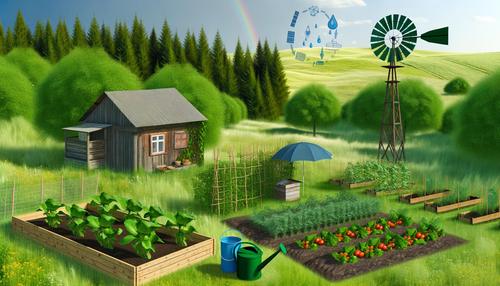Finding Homesteading Land
One of the most critical steps in the homesteading process is finding suitable homesteading land. The ideal plot will offer fertile ground for farming, a reliable water source, and adequate space for both gardening and raising livestock. While rural homesteading land may seem remote, it provides the seclusion needed to achieve a tranquil and self-sufficient lifestyle. Make sure to research the local zoning laws and property taxes to ensure the land meets all your needs. Many states have specific regulations about what you can and can’t do on your homestead property, so it’s vital to be aware of these before making a purchase.
Securing Homesteading Grants
Capital is a significant aspect to consider when planning to start homesteading. Fortunately, there are various homesteading grants available that can help alleviate some of the financial burdens. These grants are often provided by state or federal programs aiming to promote sustainable living and agricultural practices. Applying for homesteading grants involves submitting a detailed plan outlining your project, how it aligns with the grant’s objectives, and a budget breakdown. These grants can cover various expenses, from purchasing seeds and livestock to installing renewable energy systems on your homestead property. Staying informed about available grants can provide crucial support in your homesteading journey.
Building Your Homestead Property
Upon acquiring homesteading land, the next task is to develop your homestead property. This includes setting up essential structures such as a home, barns, and other facilities needed for your activities. Prioritize making your property self-sufficient by installing renewable energy sources like solar panels or wind turbines. Planting a garden with a variety of fruits and vegetables will help sustain your family year-round. Additionally, consider incorporating rainwater harvesting systems to ensure a consistent water supply. Building your homestead property requires meticulous planning and hard work, but the rewards of a self-sustaining lifestyle make it worthwhile.
Challenges and Rewards of Rural Homesteading
Rural homesteading comes with its set of challenges and rewards. While the seclusion and vast space offer numerous benefits, they also pose logistical issues, such as limited access to medical facilities, schools, and other amenities. Overcoming these challenges involves thorough preparation and resourcefulness. Networking with other homesteaders can provide valuable insights and support. Despite the hurdles, the rewards of rural homesteading are immense. You gain the satisfaction of living sustainably, reducing your ecological footprint, and becoming more self-reliant. The lifestyle also offers a unique opportunity to connect deeply with nature and enjoy a slower, more meaningful way of life.
The Future of Homesteading
As our society becomes increasingly aware of environmental and economic sustainability, the homesteading movement continues to grow. More people are seeking to start homesteading as a way to break free from conventional living and embrace a self-sufficient lifestyle. Innovations in renewable energy and sustainable farming practices are making it easier for new homesteaders to succeed. Governments and organizations are also recognizing the benefits of homesteading, leading to more support and resources becoming available. The future of homesteading looks promising, with a growing community of like-minded individuals committed to living sustainably on their homestead properties.

